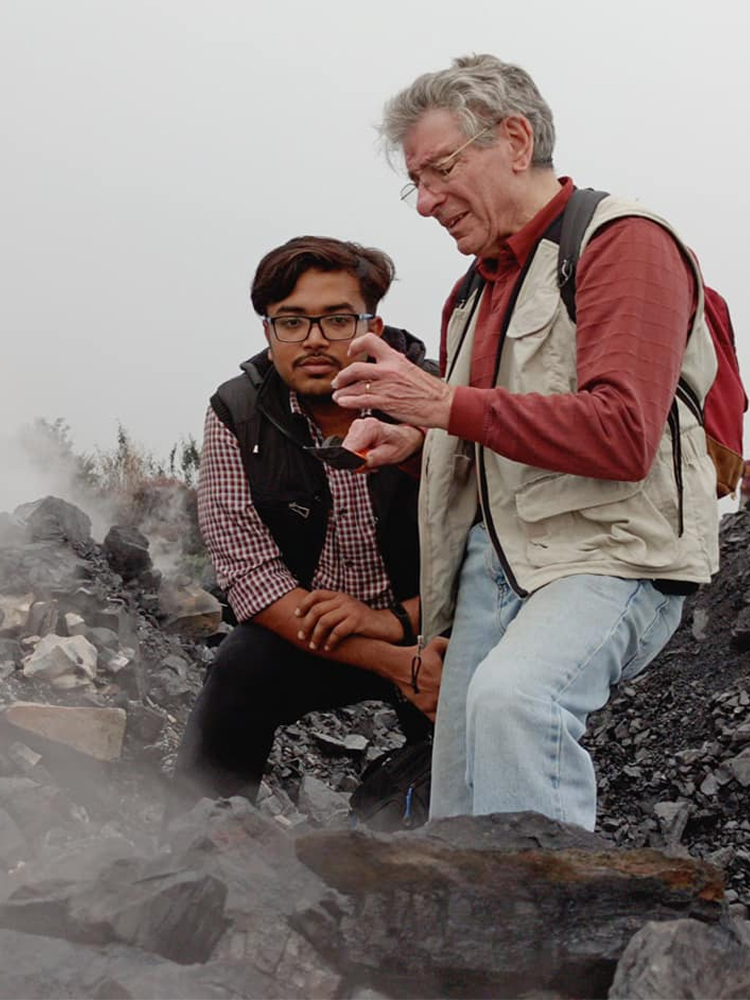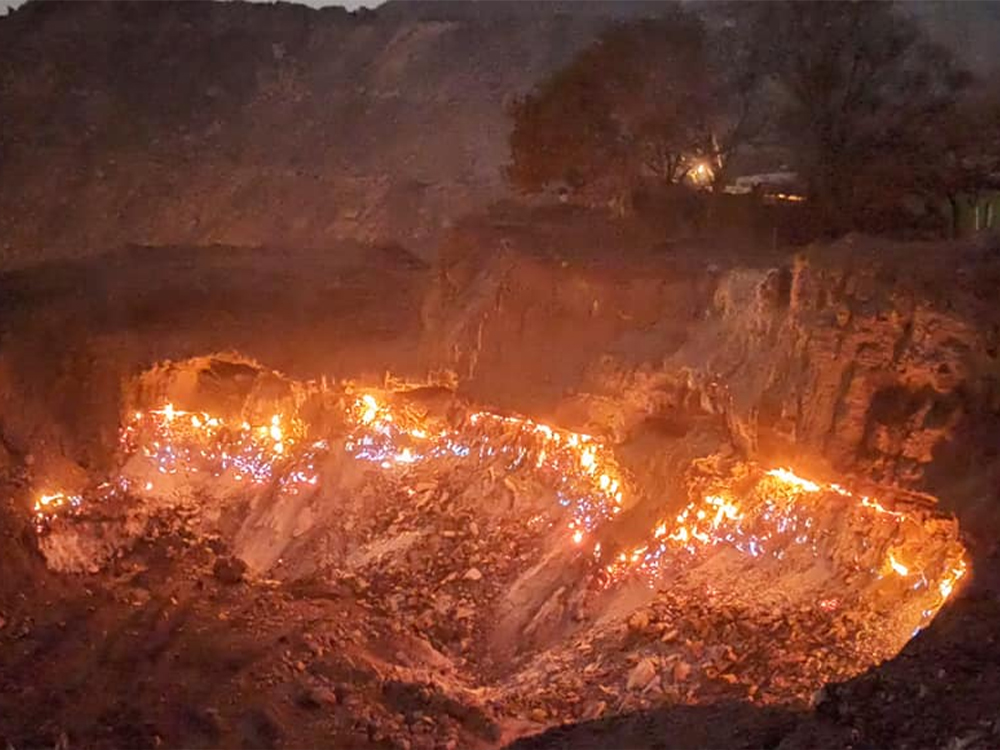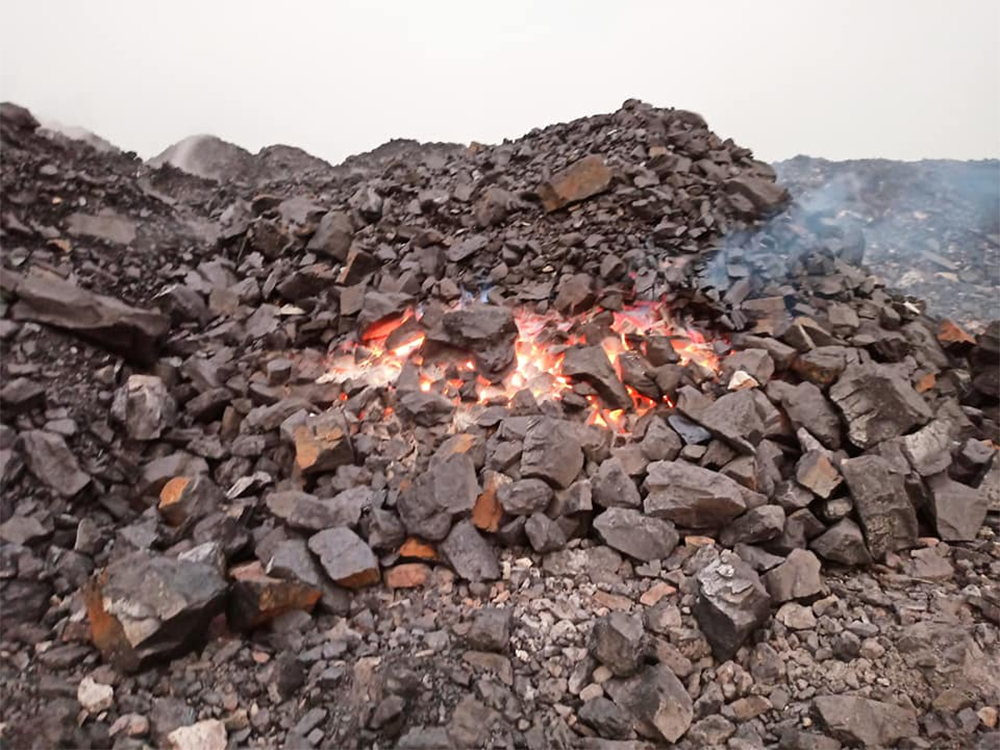From the Field: UTD Geoscientist Studies 100-Year-Old Coal Fires
01.27.2020
 Dr. Robert Finkelman (right), a UT Dallas geoscientist, collects and examines samples of materials from a 100-year-old coal fire in the Jharia region in India, along with Abhishek Kumar, a graduate student from the Birla Institute of Technology, Mesra.
Dr. Robert Finkelman (right), a UT Dallas geoscientist, collects and examines samples of materials from a 100-year-old coal fire in the Jharia region in India, along with Abhishek Kumar, a graduate student from the Birla Institute of Technology, Mesra.
The Jharia region of Jharkhand state in eastern India is home to two large underground coal mines and several large open cast mines, covering some 110 square miles. Uncontrolled fires in the coal fields there have been burning for over 100 years, although it’s not known exactly how the fires started in 1916.
Dr. Robert Finkelman, a lecturer and research scientist in the Department of Geosciences in the School of Natural Sciences and Mathematics at UT Dallas, recently spent several weeks in India as a Fulbright Specialist. Finkelman, along with colleagues and graduate students from the Birla Institute of Technology, Mesra, traveled to Jharia to assess the potential health impacts of the coal fires.
“Much has been written about the uncontrolled coal fires over the past 20 years or so but no authoritative studies have been conducted to determine if, and how, they may be affecting the health of the nearby villagers,” Finkelman said. “Two years ago I directed a study using a questionnaire that indicated the people in a village about a mile from active fires were 98% more likely to report health problems than villagers living 5 miles from the fires. The current project was designed to collect samples that might help us identify what may be contributing to the health problems.”
 A coal bed burns beneath a village in Jharia, India.
A coal bed burns beneath a village in Jharia, India.
Finkelman has devoted his career to understanding coal’s properties, economic byproducts, and environmental and health impacts. He specializes in the field of medical geology, a science dealing with the impact of geologic materials and processes on animal and human health.
This was Finkelman’s first trip to Jharia, where he and his colleagues collected samples of coal, water, soil, plants, and condensates and sublimates from vents from which hot gases were escaping.
“We were not authorized to conduct health surveys, but in talking to the villagers about the fires, I did notice that some appeared to have dental fluorosis – mottling of the teeth caused by excess fluorine,” Finkelman said.
Inhaling or ingesting excessive amounts of fluorides – compounds that contain fluorine – not only can lead to tooth damage, but also to debilitating skeletal disease.
 Coal fires have been burning for more than 100 years in Jharia, India.
Coal fires have been burning for more than 100 years in Jharia, India.
“Preliminary analysis of the samples collected from near that village showed extraordinary levels of fluorine,” Finkelman said.
Now back at UT Dallas, Finkelman has confirmed the high levels of fluorine and is beginning to analyze more closely the gathered samples using a variety of advanced instruments in the geosciences department, including a scanning electron microscope that can magnify materials up to several thousand times while also determining their chemical composition.
Samples also will be examined with the department’s new X-ray diffractometer to determine exact mineral composition and crystal structure.



